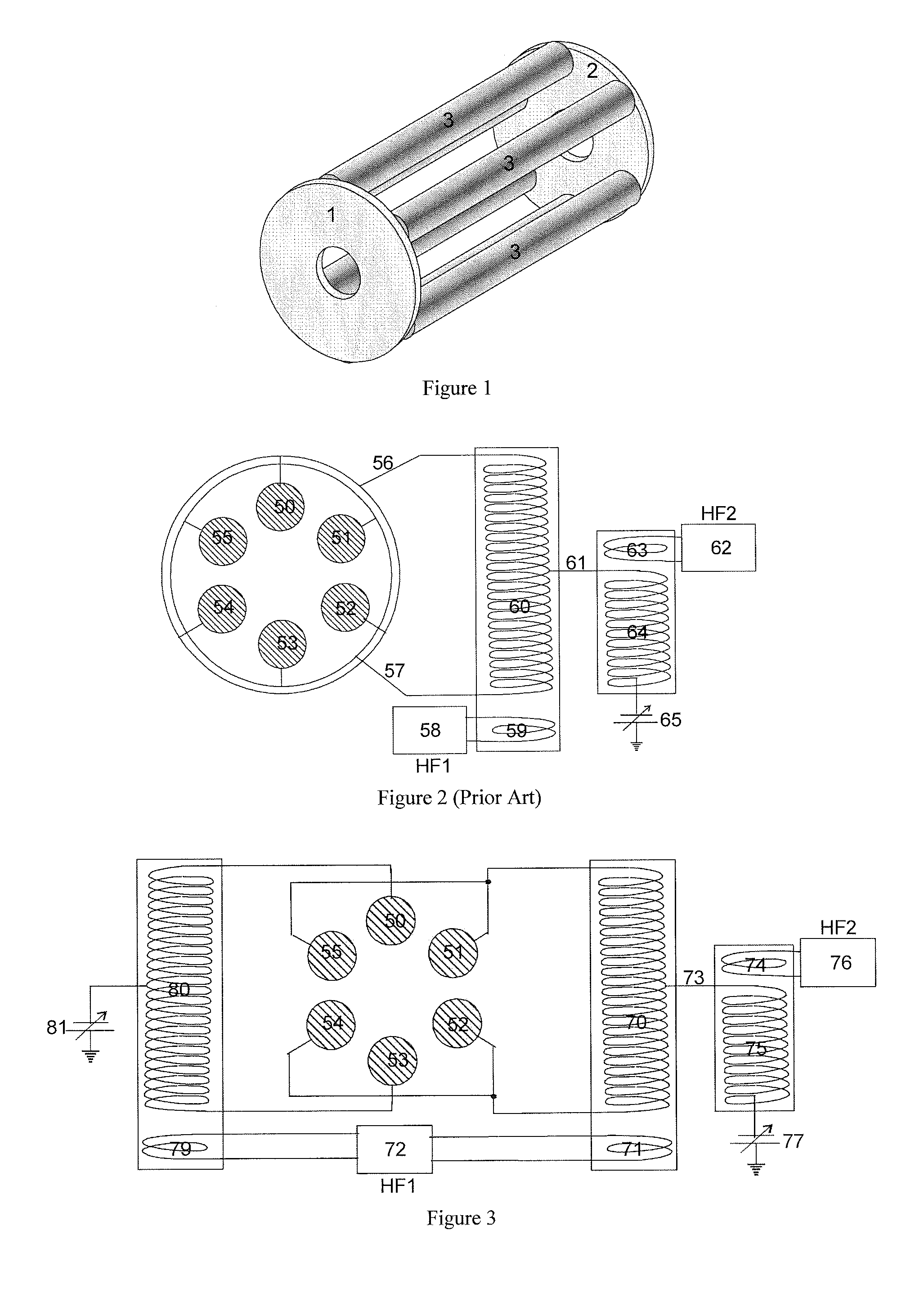Mixed radio frequency multipole rod system as ion reactor
a multi-pole rod and mixed radio frequency technology, applied in the direction of particle separator tube details, separation processes, mass spectrometers, etc., can solve the problems of slow scanning rate of fourier transform mass spectrometers, limited commercial embodiments of 3d ion traps, and difficulty in fragmentation of heavy ions, so as to achieve the effect of easy electrical adjustmen
- Summary
- Abstract
- Description
- Claims
- Application Information
AI Technical Summary
Benefits of technology
Problems solved by technology
Method used
Image
Examples
Embodiment Construction
[0039]A linear RF ion trap with at least three pairs of rods, for example a hexapole or octopole ion trap, applies a new type of electronic power configuration in order to achieve a higher yield of fragment ions for a fragmentation by electron transfer (ETD). Rod systems with only quite small inside diameters of around three to five millimeters are used for the reaction cell. This means that only moderately high RF voltages of only a few hundred volts are required, and these can be generated in relatively simple and small pot core transformers, so the price of the configuration is kept within reasonable limits.
[0040]FIG. 3 shows an embodiment for the wiring configuration of the pole rods 50 to 55 of a hexapole ion trap, where four supply leads and three RF transformers are now required, justified by the higher yield of fragment ions. A single-phase second RF voltage is used here, connected to four of the six rods. It may even still more effective for a high ETD yield to connect this...
PUM
 Login to View More
Login to View More Abstract
Description
Claims
Application Information
 Login to View More
Login to View More - R&D
- Intellectual Property
- Life Sciences
- Materials
- Tech Scout
- Unparalleled Data Quality
- Higher Quality Content
- 60% Fewer Hallucinations
Browse by: Latest US Patents, China's latest patents, Technical Efficacy Thesaurus, Application Domain, Technology Topic, Popular Technical Reports.
© 2025 PatSnap. All rights reserved.Legal|Privacy policy|Modern Slavery Act Transparency Statement|Sitemap|About US| Contact US: help@patsnap.com



